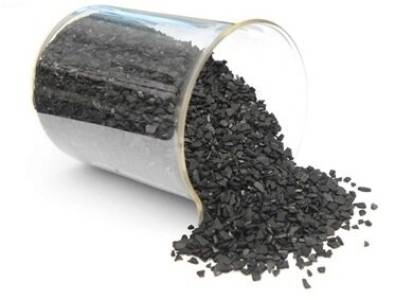Description
Activated Carbon: A Powerful Purifier for Diverse Applications
Activated carbon, also known as activated charcoal, is a highly porous material with an incredibly large surface area, making it an exceptional adsorbent. This means it excels at attracting and holding various substances onto its surface, effectively removing impurities from liquids and gases. Unlike traditional charcoal, activated carbon undergoes a special activation process that significantly enhances its porous structure and adsorption capacity. This process typically involves high-temperature heating in the presence of oxidizing agents or steam.
Key Features and Benefits:
- Exceptional Adsorption Capacity: The extensive network of pores within activated carbon provides an enormous surface area, allowing it to effectively trap a wide range of impurities, including:
- Organic compounds: Pesticides, herbicides, pharmaceuticals, VOCs (Volatile Organic Compounds)
- Inorganic compounds: Heavy metals, chlorine, fluoride
- Gases: Odors, sulfur compounds, carbon dioxide
- Color and turbidity: Removing unwanted discoloration and cloudiness in liquids
- Versatile Applications: Activated carbon finds use across various industries and applications, including:
- Water Purification: Removing contaminants from drinking water, wastewater, and industrial effluent. Used in both residential and industrial water filters.
- Air Purification: Filtering air in homes, offices, and industrial settings to remove odors, gases, and pollutants. Used in air purifiers, gas masks, and respirators.
- Medical Applications: Treating poisoning cases by adsorbing toxins in the digestive system. (Consult a medical professional before using).
- Food and Beverage Industry: Improving the taste, color, and clarity of beverages and removing impurities from food products.
- Gold Recovery: Used in the extraction of gold from solutions.
- Types of Activated Carbon: Activated carbon comes in various forms, each suited for specific applications:
- Powdered Activated Carbon (PAC): Easily dispersed in liquids, ideal for water treatment.
- Granular Activated Carbon (GAC): Used in columns and filters for water and air purification.
- Extruded Activated Carbon: High mechanical strength, suitable for demanding applications.
- Safety Precautions: While generally safe when used as intended, activated carbon can be harmful if ingested in large quantities. Always handle according to manufacturer's instructions and follow safety guidelines for the specific application. Avoid inhalation of dust.
Specifications (May vary depending on grade and source):
- Iodine Number: A measure of adsorption capacity (higher is better).
- Methylene Blue Number: Indicates the micropore volume.
- Ash Content: Percentage of inorganic matter.
- Particle Size: Depends on the form (powder, granular, etc.).
- Moisture Content: Percentage of water.
Choosing the Right Activated Carbon:
Selecting the appropriate type of activated carbon depends on the specific application and the nature of the impurities to be removed. Factors to consider include the type of contaminant, the concentration of contaminants, the flow rate, and the desired level of purification. Consult with a specialist to determine the best option for your needs.
Conclusion:
Activated carbon is a remarkably effective and versatile material for purifying liquids and gases. Its exceptional adsorption capabilities make it an indispensable component in a wide range of industrial, commercial, and domestic applications. Understanding its properties and choosing the correct grade is crucial for achieving optimal results.
